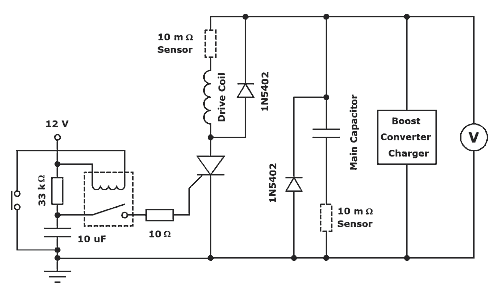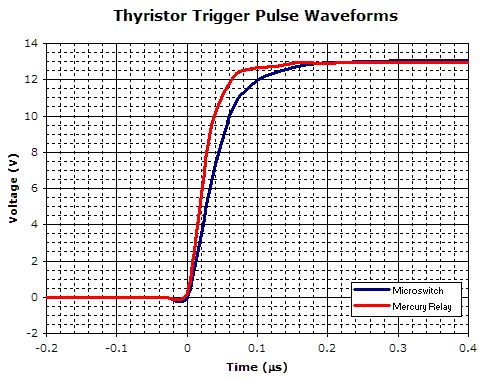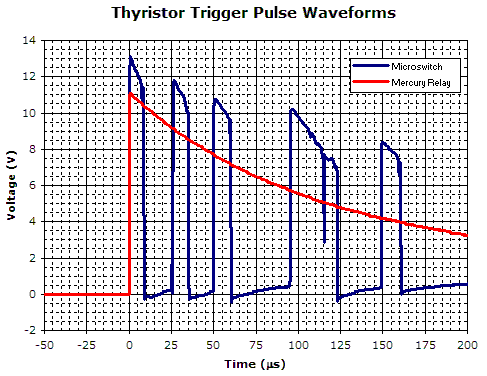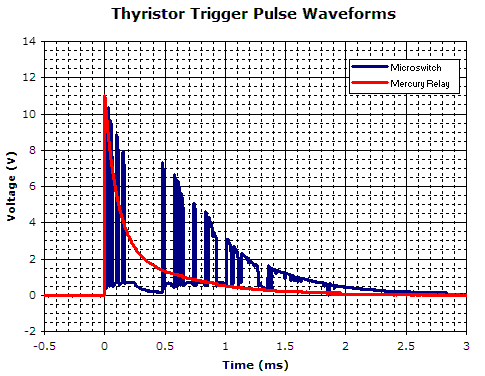
|
Thyristor Fired Coilgun Experiments
The thyristor fired coilgun is a common variant, due mainly to their high voltage and pulsed current capabilities. A diagram of the system that was designed for these experiments is given in fig 1.
Fig 1. Thyristor fired coilgun circuit
The thyristor is an International Rectifier device, part number 50RIA100 (50 A / 1000 V). The pulsed current capability is 1200 A for a half-sine pulse of 10 ms. This series of experiments investigates the effect of charging voltage and launch delta on the projectile velocity and coilgun efficiency. The value of capacitance that can be effectively employed in this type of coilgun is limited due to the fact that the thyristor cannot be turned off once it has begun to conduct current. This requires that the current pulse be of similar duration to the projectile transit time, otherwise suckback will vastly reduce the muzzle velocity. In view of this only the 13,600 uF and 33,000 uF capacitors are used. The current sensor was placed in the capacitor ground return path to monitor the capacitor discharge, or in the coil current path to record the full coil current pulse. Placing the sensor in the coil current path means that the measuring equipment (PC 'scope and laptop) floats up to some arbitrary voltage since no part of the system is grounded to the earth potential. The charging voltage was limited to 80 V for these measurements. Two switches were considered for commutating the trigger pulse; a mercury-wetted relay and a microswitch. Unlike most mechanical contact switches, the mercury-wetted relay doesn't exhibit any contact bounce, so the gate current will be maintained without interruption during the critical turn on phase. Figure 2 shows the rising edge of the trigger pulse. Fig 3 shows the initial part of the trigger pulse voltage that is applied to the gate resistor, and fig 4 shows the overall pulse.
Fig
2. The mercury relay pulse has a 10 % - 90 % rise time of around
70 ns.
Fig 3. The microswitch's first contact period is about 10 us.
Fig 4. The microswitch exhibits plenty of contact bounce.
The intermittent trigger pulse produced by the contact bounce is probably not a problem when the A-K current pulses have low di/dt, such as those typical of low power coilguns. If, however, the thyristor is going to be operated close to its peak rated di/dt then the nature of the gate pulse needs to be examined in more detail, otherwise the device might fail thermally due to the excessive current density brought about by insufficient gate charge diffusion.
Results: |
|





